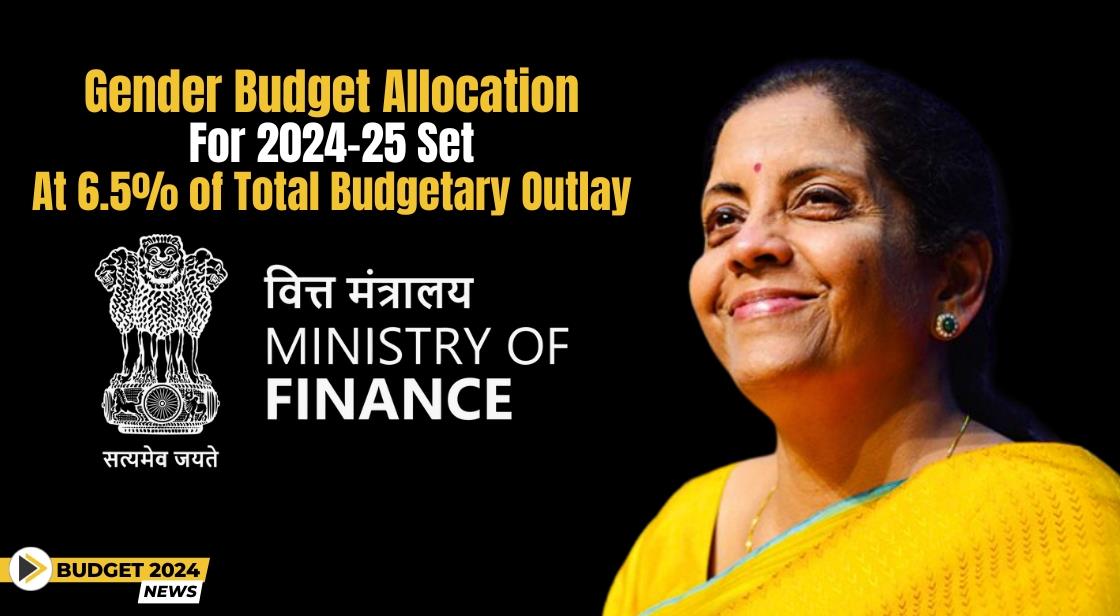Gender Budget Allocation for 2024-25 Set at 6.5% of Total Budgetary Outlay

News Synopsis
In a significant move towards addressing gender disparities, the government has projected a gender budget allocation for the fiscal year 2024-25, aiming to dedicate 6.5% of the total budgetary outlay. Gender budgeting, recognized as a fiscal policy tool, plays a pivotal role in integrating gender-related concerns into policy decision-making.
Understanding Gender Budgeting:
Gender budgeting goes beyond traditional budgetary processes, aiming to comprehend the diverse impacts of budgets on different genders. Its primary objective is to formulate policies that mitigate gender inequalities by ensuring a gender-sensitive approach to resource allocation, policy formulation, and continuous monitoring across various life stages.
Composition of the Gender Budget:
The gender budget for the upcoming fiscal year is structured into two key sections. Part A emphasizes women-specific schemes, with a complete allocation dedicated to women. Meanwhile, Part B focuses on pro-women schemes, allocating a minimum of 30% of funds to benefit women. The total projected allocation for the gender budget in 2024-25 is set at Rs 3,09,690 crore, constituting 6.5% of the total budgetary outlay.
Sectoral Distribution and Ministry Allocation:
Breaking down the allocation, Part A schemes, encompassing 61 schemes under 22 ministries/departments, account for 36% of the total. Part B schemes, spanning 238 schemes under 31 ministries/departments, constitute the remaining 64%. The Ministry of Women and Child Development is slated to receive a total allocation of Rs 26,092 crore, with 13% earmarked for Part A and 65% for Part B.
Key Factors Influencing budget Allocation:
A noteworthy inclusion in Part B is the Jal Jeevan Mission (JJM), securing 48% of the total allocation under the scheme for women. This strategic move acknowledges the significant impact of water accessibility on the lives of women in India, recognizing the importance of their time in economic and educational pursuits.
Significant Schemes Shaping the Gender Budget:
Analysis of the gender budget composition highlights six specific schemes wielding substantial influence, collectively constituting 61.4% of the total gender budget. This underscores their pivotal role in shaping the financial allocation for initiatives specifically designed to address gender disparities.
Key Highlights:
-
Total Budget Allocation: ₹3,09,690 crore (USD 41.1 billion)
-
Increase Compared to 2023-24: 19%
-
Share of Total Budget: 6.5%
-
Part A (Women-Specific Schemes): 36% of allocation
-
Part B (Pro-Women Schemes): 64% of allocation
Breaking Down the Allocation:
-
Ministry of Women and Child Development: ₹26,092 crore (8.4% of total)
-
Jal Jeevan Mission (JJM): Included in Part B for the first time, with 48% allocated to women
-
Six Key Schemes: Account for 61.4% of the total Gender Budget
Challenges and Opportunities:
While the concentration on key schemes is evident, challenges remain in terms of monitoring and obtaining gender-segregated data on scheme benefits. The absence of clear delineation may create ambiguity in categorizing schemes within the Gender Budgeting Statement.
-
Monitoring and Data: Lack of clear data and monitoring mechanisms for scheme benefits pose challenges in evaluating effectiveness.
-
Concentrated Allocation: Over-reliance on a few key schemes might limit the impact on diverse needs.
Conclusion:
The projected gender budget allocation for 2024-25 reflects a commendable step towards promoting gender equality. As the government continues its commitment to addressing gender-specific issues, the implementation and monitoring of these allocations will play a crucial role in realizing the desired impact.
You May Like









